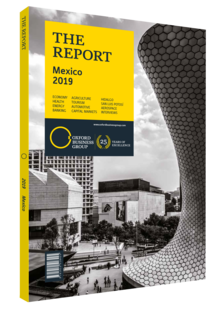The State of Hidalgo boosts funding for small and medium-sized enterprises
According to an OECD statement delivered in May 2019, SMEs will play a key role in the economic development of Hidalgo. The organisation suggested that the state should look to create “a more strategic vision to integrate local programmes with funding and leverage the National Entrepreneur Fund”. The fund, however, no longer exists; it was created in 2013 as an initiative of the National Institute for Entrepreneurship (Instituto Nacional del Emprendedor, INADEM) under the administration of former President Enrique Peña Nieto, but INADEM was dismantled shortly after President Andrés Manuel López Obrador came into office. “The dissolution of INADEM is undoubtedly making the environment more difficult for entrepreneurs, and we are looking forward to a replacement initiative,” Alonso Huerta, director of the Council of Science, Technology and Innovation of Hidalgo, told OBG.
Transition Time
This complex environment affecting the broader national level is arising just as Hidalgo, which has traditionally been highly dependent on the public sector, undergoes a transition towards a more private sector-driven economy. “SMEs in Hidalgo are mostly having a tough time because there is very little public investment from the federal government,” Julio Bravo, director of the Hidalgo Institute for Business Competitiveness (Instituto de Competitividad Empresarial de Hidalgo, IHCE), told OBG. As such, it has become more urgent for SMEs to take advantage of the MXN53.5bn ($2.8bn) of private investment that has arrived in the state since Omar Fayad Meneses, the governor of Hidalgo, took office in 2016.
At the state level the state of Hidalgo is looking to increase financing for SMEs and entrepreneurs by actively linking new investors with local companies. However, some foreign companies are bringing in their own providers, which means that local companies often end up participating as subcontractors. Elvia Noriega Hernández, president of the Pachuca delegation of National Chamber of Industry, said that local companies can do more to maximise the benefits of these new investments. “We are seeking support to become providers for all these investments, but we also acknowledge that, to do this, local companies need to become more organised,” Noriega told OBG.
The companies landing in Hidalgo are looking for providers with highly qualified and certified workers, which means that local public sector contractors are usually overlooked. “Certifications are certainly an issue,” José Luis Romo Cruz, the state’s secretary of public policy, told OBG. “This is the first time in the history of the state that SMEs have this scale of opportunity with large private companies, but they lack experience, so we have to help them to prepare.”
Financing & Certification
To support SMEs, the IHCE is providing local businesses with financing and certifications such as ISO. For example, the institute, in partnership with the Secretariat of Economic Development, awarded five of Giant Motors Latinoamérica’s providers in Ciudad Sahagún with ISO 9001:2015 certificates in May 2019. With federal funds slow to arrive, however, much more remains to be done.
Financial support for SMEs is especially important because suppliers and providers are often paid 120 or 180 days after a job is completed, which can test the liquidity of local businesses. “Hidalgo’s small businesses simply do not have the funding capacity to work under these conditions,” Noriega said, adding that the lack of financing is also holding back SMEs when it comes to implementing new technologies – another factor that large companies consider when choosing suppliers.
In addition to state government initiatives, SMEs have also received help from federal schemes. For example, in 2017 the Secretariat of Economic Development launched the MXN715m ($37m) “Set up Your Business and I Will Support You” programme. Still, some argue that these measures are insufficient. “I would really like development banks, which have a low cost of funds, to start offering attractive rates for SMEs,” Romo said.
You have reached the limit of premium articles you can view for free.
Choose from the options below to purchase print or digital editions of our Reports. You can also purchase a website subscription giving you unlimited access to all of our Reports online for 12 months.
If you have already purchased this Report or have a website subscription, please login to continue.

